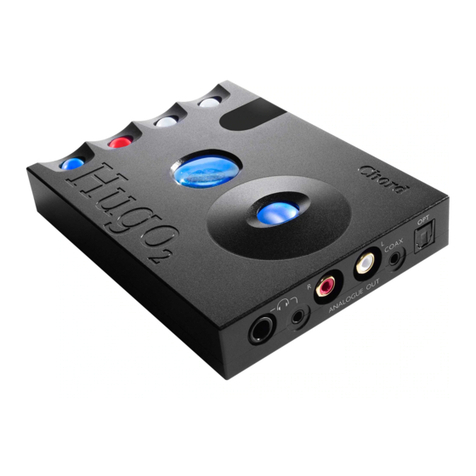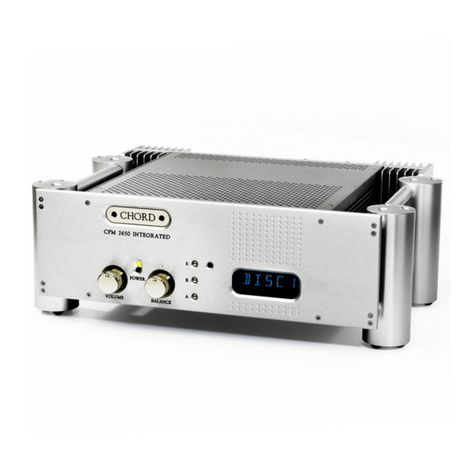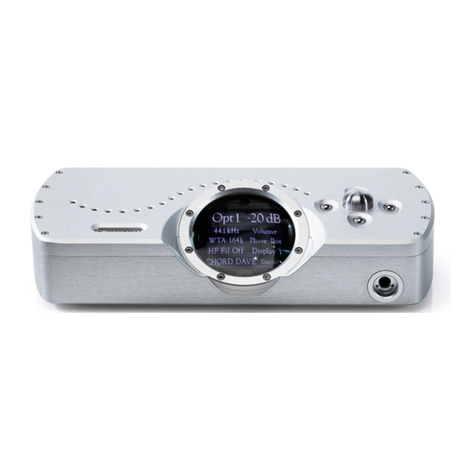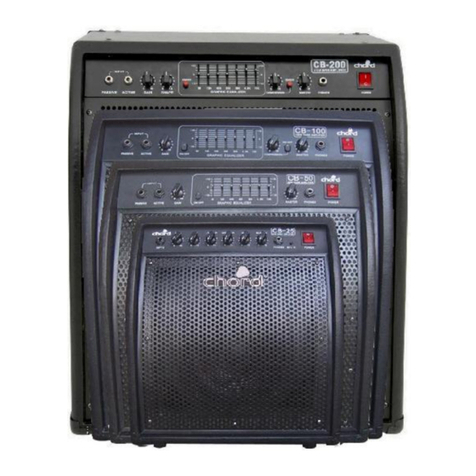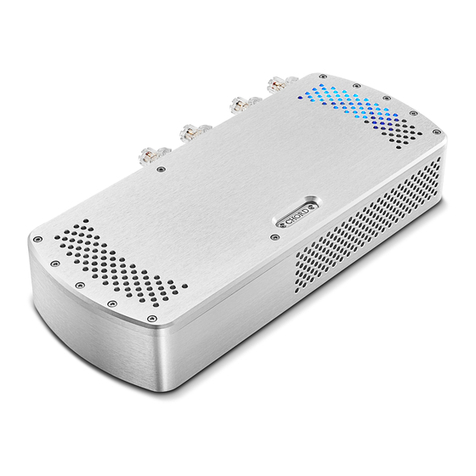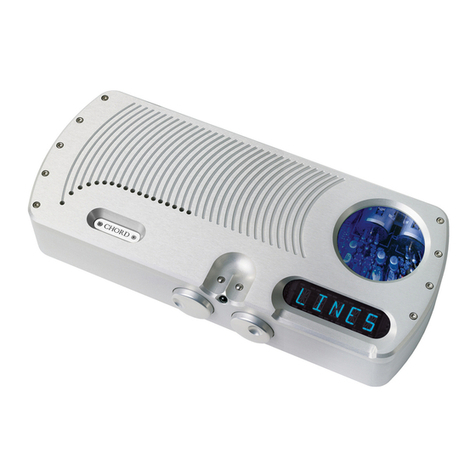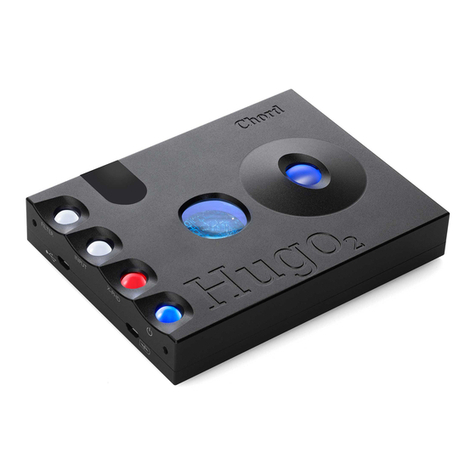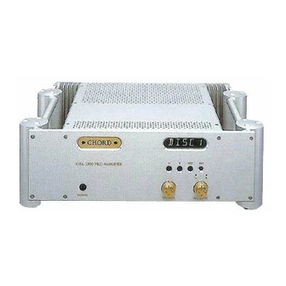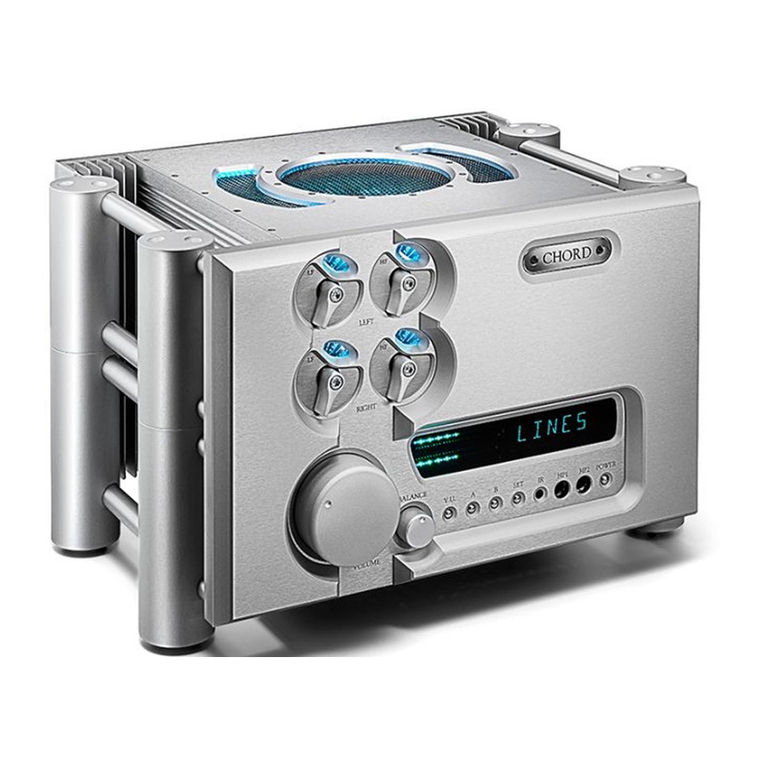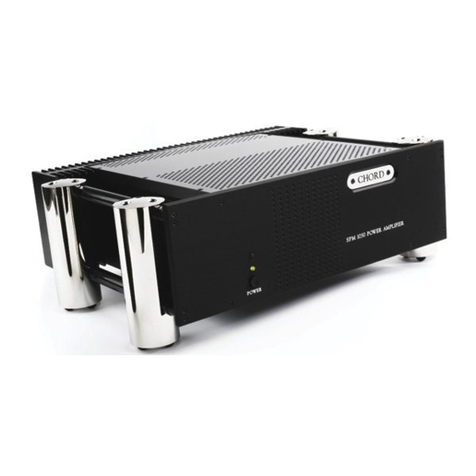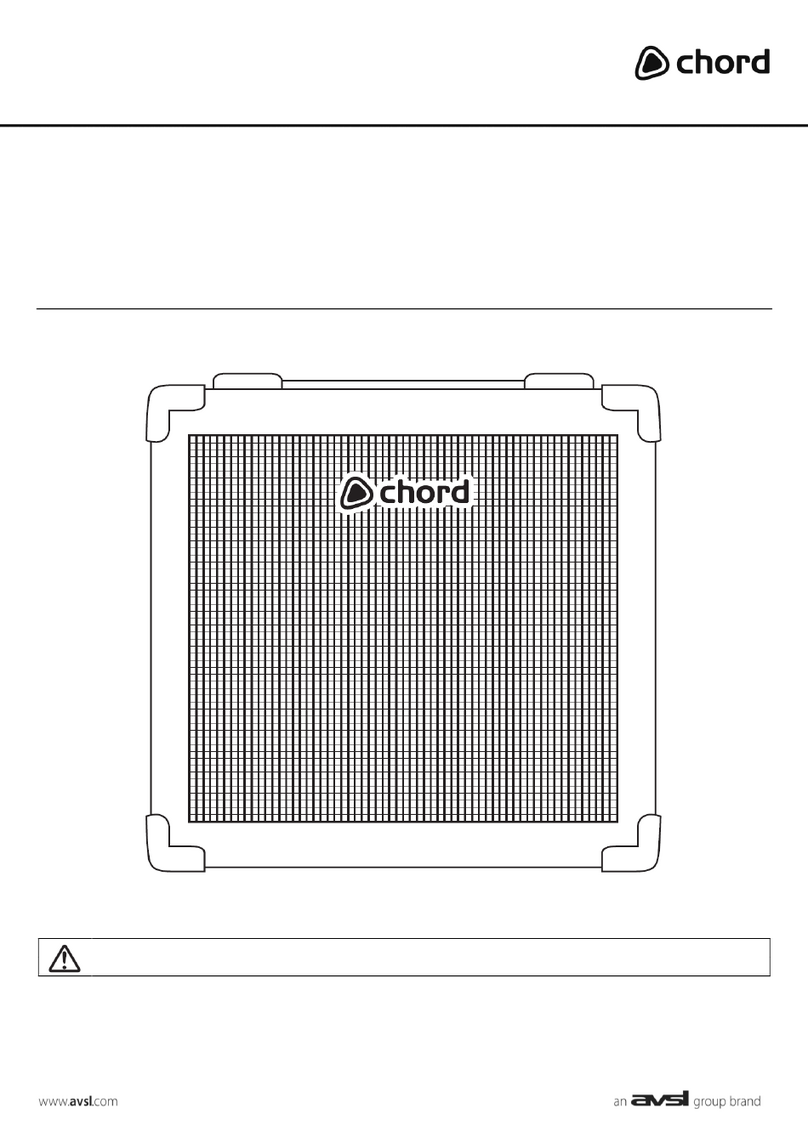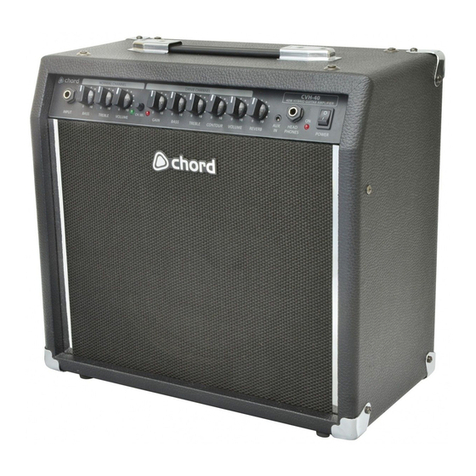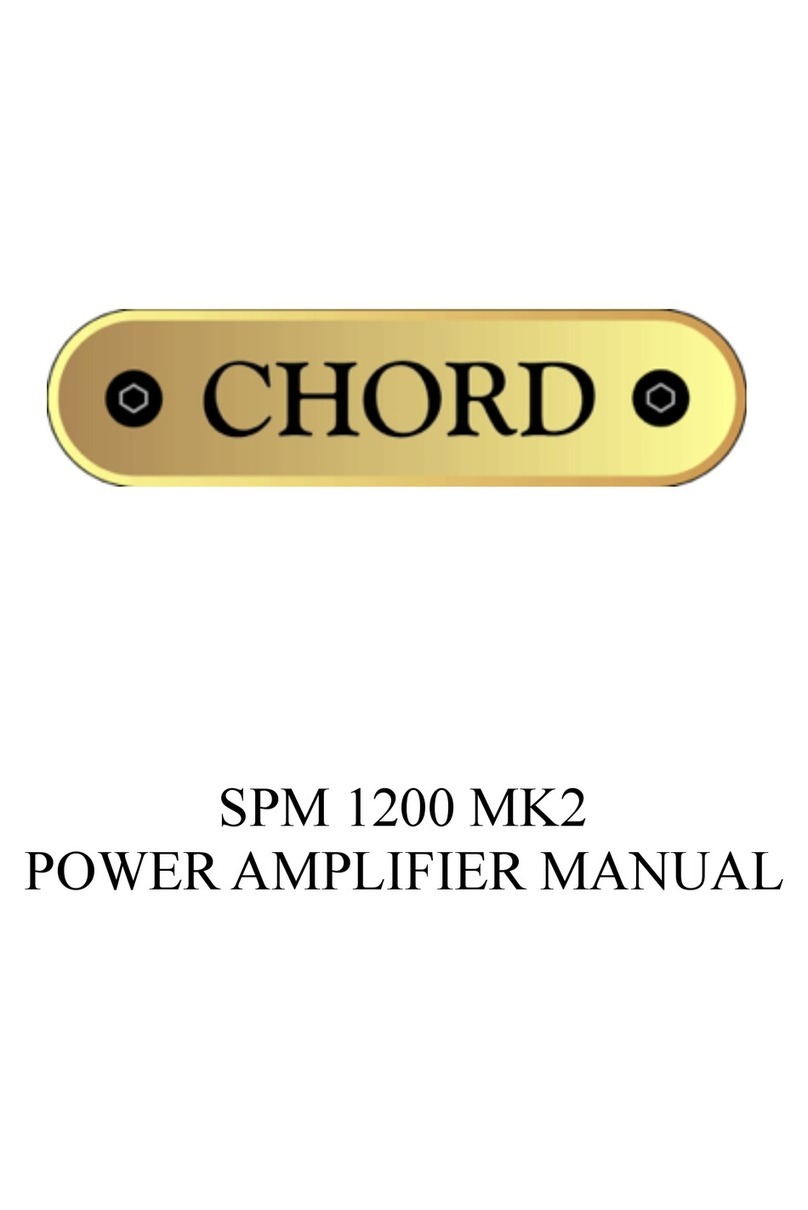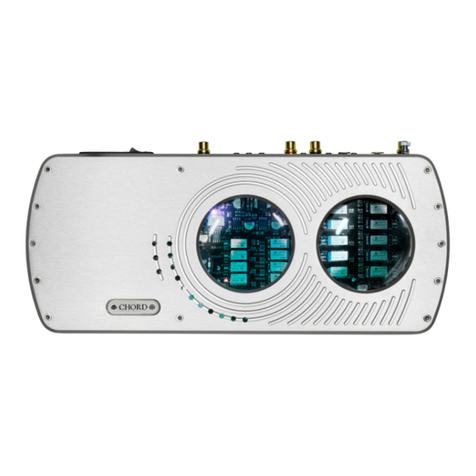
Chord Electronics
Hugo TT 2 | Manual
_
6 // 35
There are no user-
serviceable components
within the Hugo TT 2
or its power supply. Dangerous
voltages/currents exist within
the Hugo TT 2 and its power
supply, posing a severe risk of
electrocution and/or fire.
Never attempt to
open, dismantle or
apply internal third-
party devices to it or insert
anything other than the listed
interconnects or headphone
adapters within this user manual.
If the Hugo TT 2 develops a
fault or the casework becomes
damaged, immediately
disconnect from the mains
power supply and connected
equipment, and contact Chord
Electronics for further advice.
1.1 Introduction
1.2 Protection against
liquids & heat
1.3 Dismantling & radio frequency
interference
1.4 Connecting your equipment
Dismantling & radio
frequency interference
1.3
With a thick, solid aluminium
chassis, the Hugo TT 2’s
casework largely protects the
sensitive internal circuitry from
radio frequency interference.
However, for optimal
performance, it is recommended
that the following points are
observed:
1. Consider placing the
Hugo away
from wireless routers.
2. Separate the Hugo TT
2 from amplifiers using
toroidal transformers.
3. Operate mobile
phones at a distance to
avoid interference.
Although the Hugo TT
2 is largely shielded,
it can generate radio
frequency interference that
may have an eect on radio and
television reception.
If this occurs, please reconsider
your placement.
Chord Electronics
Hugo TT 2 | Manual
_
Before connecting the Hugo TT
2 to any equipment, consult the
manufacturer’s user guide to
confirm compatibility.
When connecting the Hugo TT
2 to any equipment please make
sure that all devices are o,
including the Hugo TT 2.
Once connected, switch all
equipment on starting with
the source and ending with the
amplification.
Initially, operate the any
connected equipment on its
lowest gain setting and lowest
volume setting, gently increasing
to a comfortable listening level.
Never operate connected
equipment to the Hugo TT
2 at excessive sound levels;
permanent hearing damage and
loss can occur.
The included 15V 4000mA
power supply simply plugs into
the Hugo TT 2.
If the power supply is
prematurely disconnected Hugo
TT 2 may still remain active for
up to 15 seconds, however, this
may cause damage to connected
equipment.
1.1 Introduction
1.2 Protection against
liquids & heat
1.3 Dismantling & radio frequency
interference
1.4 Connecting your equipment
Connecting your equipment 1.4
Never disconnect the
power cable during
operation. Only
disconnect when Hugo TT
2 is o. If the power cable
is disconnected during
o peration there is a risk
of damage to connected
equipment.
7 // 35
